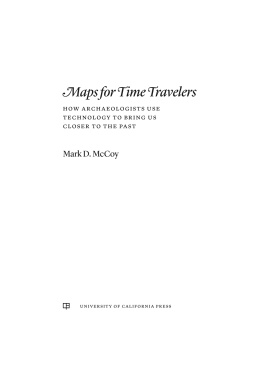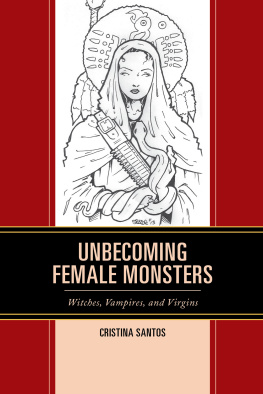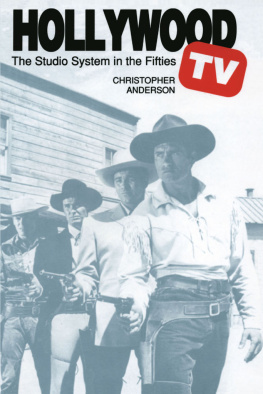M. C. Anderson - Female reproductive system
Here you can read online M. C. Anderson - Female reproductive system full text of the book (entire story) in english for free. Download pdf and epub, get meaning, cover and reviews about this ebook. City: Edinburgh, year: 1991, publisher: Churchill Livingstone, genre: Art. Description of the work, (preface) as well as reviews are available. Best literature library LitArk.com created for fans of good reading and offers a wide selection of genres:
Romance novel
Science fiction
Adventure
Detective
Science
History
Home and family
Prose
Art
Politics
Computer
Non-fiction
Religion
Business
Children
Humor
Choose a favorite category and find really read worthwhile books. Enjoy immersion in the world of imagination, feel the emotions of the characters or learn something new for yourself, make an fascinating discovery.
- Book:Female reproductive system
- Author:
- Publisher:Churchill Livingstone
- Genre:
- Year:1991
- City:Edinburgh
- Rating:3 / 5
- Favourites:Add to favourites
- Your mark:
- 60
- 1
- 2
- 3
- 4
- 5
Female reproductive system: summary, description and annotation
We offer to read an annotation, description, summary or preface (depends on what the author of the book "Female reproductive system" wrote himself). If you haven't found the necessary information about the book — write in the comments, we will try to find it.
Female reproductive system — read online for free the complete book (whole text) full work
Below is the text of the book, divided by pages. System saving the place of the last page read, allows you to conveniently read the book "Female reproductive system" online for free, without having to search again every time where you left off. Put a bookmark, and you can go to the page where you finished reading at any time.
Font size:
Interval:
Bookmark:

The publisher and the University of California Press Foundation gratefully acknowledge the generous support of the Ahmanson Foundation Endowment Fund in Humanities.
Mark D. McCoy

UNIVERSITY OF CALIFORNIA PRESS
University of California Press
Oakland, California
2020 by Mark D. McCoy
Library of Congress Cataloging-in-Publication Data
Names: McCoy, Mark D., 1975 author.
Title: Maps for time travelers : how archaeologists use technology to bring us closer to the past / Mark D. McCoy.
Description: Oakland, California : University of California Press, [2020] | Includes bibliographical references and index.
Identifiers: LCCN 2019041034 (print) | LCCN 2019041035 (ebook) | ISBN 9780520303164 (cloth) | ISBN 9780520972650 (ebook)
Subjects: LCSH : ArchaeologyRemote sensing. | Aerial photography in archaeology. | Remote-sensing images. | ArchaeologyData processing. | Geographic information systems.
Classification: LCC CC 76.4 . M 38 2020 (print) | LCC CC 76.4 (ebook) | DDC 930.1dc23
LC record available at https://lccn.loc.gov/2019041034
LC ebook record available at https://lccn.loc.gov/2019041035
Manufactured in the United States of America
29 28 27 26 25 24 23 22 21 20
10 9 8 7 6 5 4 3 2 1
For Ann, Elsie, and Sam
What do archaeology and time travel stories have to do with one another? Quite a lot actually. Both are ways that we satisfy our curiosity about the past. Time travel is a fiction genre that we all know well. But archaeology is less familiar: it is not always clear what is going on, or why.
I am an archaeologist and I wrote this book to introduce you to how geospatial technologies are changing the way we investigate the past. These technologies include GPS, satellite imagery, digital maps, and other instruments that are becoming more common, like drones and 3-D laser scanners. Here you will find a crash course, with minimal jargon, on how we employ these tools to create a better, more complete picture of the ancient world.
I have a deep respect for my colleagues who have dedicated their careers to working out how to make specific technologies better serve archaeology. I, however, am a technology omnivore. Over the years I have used every geospatial technology described in this book in the pursuit of knowledge about life on Pacific islands in the era before contact with the outside world. I started down this road by learning how to use digital mapping software called geographic information systems (GIS).
I started using GIS in archaeology in the late 1990s. It was especially handy when, as a PhD student at the University of California, Berkeley, I was interested in how changes in the landscape reflected trends in the ancient economy and society of the Hawaiian Islands. The tiny island of Molokai, the setting for my research, had largely been bypassed by modern urban development. This means that today you can hike around and see thousands upon thousands of stone walls and foundations of houses, temples, and other structures abandoned centuries ago. I might still be wandering around there if not for GIS. It not only gave me a way to organize and explore the vast and continuous landscape of features, it also allowed me to do spatial analyses that would have been almost impossible to calculate by hand. These analyses showed how changes in small communities fit into the bigger history of the island, a history that had been passed down through oral traditions for generations.
My research in the Hawaiian Islands, and other Pacific islands, forms just a small part of what has been called a geospatial revolution in archaeology. Back in 2006, when I landed my first academic job, archaeology was well on its way to dealing with the teething problems that came with adopting GIS into our discipline, and you could see a shift toward investigating whole landscapes rather than individual sites. That first job was teaching at San Jos State University in Silicon Valley. Elsewhere in Silicon Valley at the same time, Google was bringing GIS to the masses. They had launched their digital globe, Google Earth, and a web-based GIS, Google Maps. While not built with archaeology in mind, web-based GIS made it easier than ever to connect people in the modern day with the physical remains of the ancient world.
The developments that really got the geospatial revolution rolling were new remote sensing and high-resolution survey techniques that brought with them a flood of new data. Within the past decade, the resolution of satellite images improved dramatically, making it more feasible to find and map archaeological sites using satellites. Archaeologists use of 3-D models and of incredible imagery from drones has exploded. Lasers mounted on aircraft have allowed us to map things otherwise hidden under thick tree canopysomething I have found especially useful in my own researchand have been hailed as an innovation on par with the invention of radiocarbon dating in terms of their impact on archaeology.
This revolution was in full swing by the time I moved to Dallas to teach at Southern Methodist University in 2014, but one extraordinarily important element was still missing. We forgot to explain to the public what exactly these leaps meant for archaeology. The consequence has been a resurgence of the popular image of archaeology as a treasure hunt, rather than as the pursuit of knowledge. I have read news coverage of archaeology so sensationalized, so deeply misguided by the treasure hunter trope, that it no longer bears any resemblance to what contemporary archaeology really does.
I sat down and thought hard about how to explain things in a new way. In a way that would speak to that part of everyone that wonders about the distant past. Then it came to me: time travel. We are not using these technologies to make treasure maps. We are using them to make maps for time travelers. Not literally, of course. We are not making maps so that future time travelers can program their onboard navigation systems and set off for the ancient world. But we do expend so much effort determining precisely where and when things happened, I cant think of anything we would be doing differently if we really were writing directions for time travelers.
If you want to see a good example of how this technology is creating maps suitable for time travelers, take a minute and check out ORBIS, Stanfords geospatial network model of the Roman world. It was created to put the costs of communication across the Roman Empire in more relatable terms than distance; specifically, in terms of time and money. It can tell you how long it will take, and how expensive it will be, to travel between Rome and London by oxcart. It is basically Expedia for Europe, the Middle East, and North Africa in AD 200.
I love time travel. But fictional time travelers almost never go to the time that I am most interested in: the time before writing was invented. Strangely, most of us hardly even notice. That is frustrating to me because most of the human past happened before writing. And it is why I felt it was important in this book to represent a cross-section of research on different times and places, not just my own research.
This is not a guide to what happened, but to how we know what happened. How to tell fact from fiction. I start with a brief introduction to how archaeologists think about location and what instruments we use to create digital worlds. These technologies have become pervasive across archaeology, but there are a few topics that they have proved especially helpful for, including retracing movement and mobility, working out how our ancestors fed themselves, and reconstructing the kinds of societies they built. In the end, I discuss some of the challenges of applying geospatial technologies more broadly, beyond the few places that have thus far received most of our attention, to expand and deepen our picture of the ancient world.
Font size:
Interval:
Bookmark:
Similar books «Female reproductive system»
Look at similar books to Female reproductive system. We have selected literature similar in name and meaning in the hope of providing readers with more options to find new, interesting, not yet read works.
Discussion, reviews of the book Female reproductive system and just readers' own opinions. Leave your comments, write what you think about the work, its meaning or the main characters. Specify what exactly you liked and what you didn't like, and why you think so.










